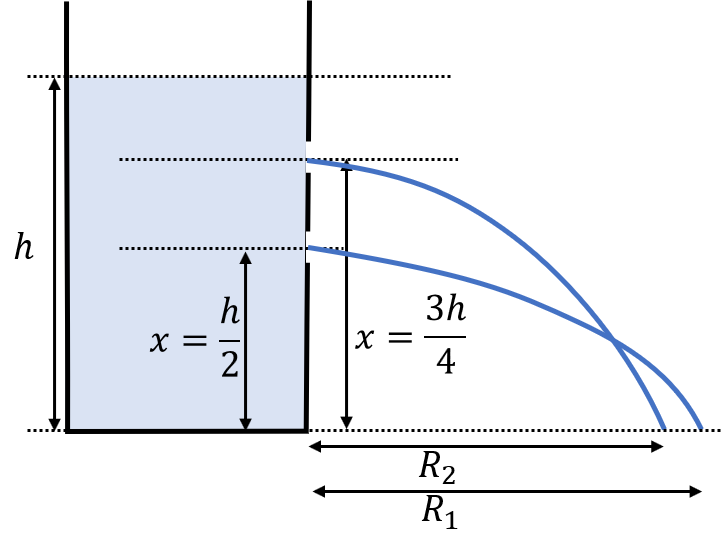A tank open on top has a depth h and is filled with water. A hole is made three-quarter from the ground and another hole is made half the depth. What is the difference in the range of water ejected through these holes?
1 Answer
The difference in range will be the height of the level of water in the tank times
Explanation:
You really want to use Torricelli's Law here.
where

The range of the stream is the horizontal distance the stream lands away from the tank. For the halfway hole, I have labeled this
How long will it take a water droplet to reach the ground once it has left the hole? Since it's vertical velocity component is controlled by gravity, the time it takes to land on the ground,
For the halfway hole,
Now we need to figure out the horizontal distance that the drop will travel in that time. It will simply be its horizontal velocity times the time.
We can find
The problem statement asks us to determine

